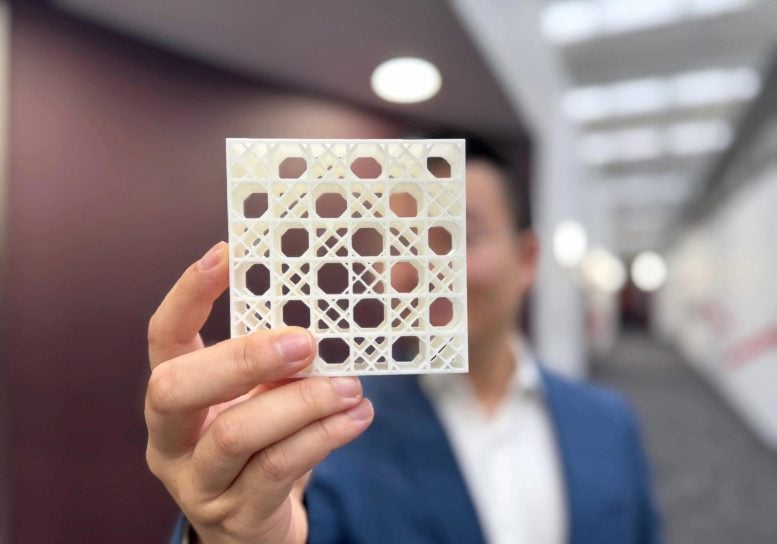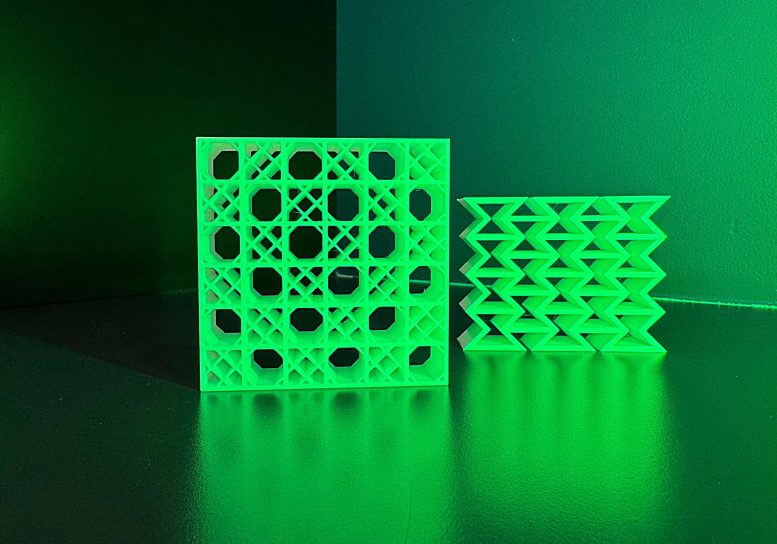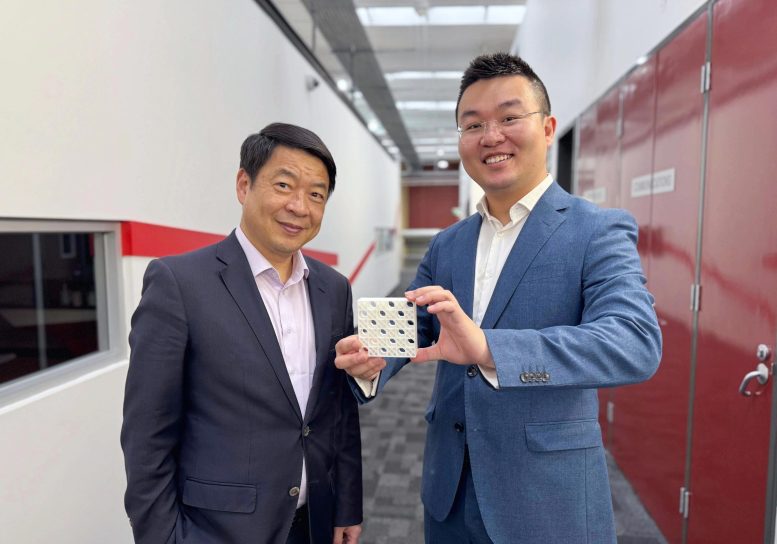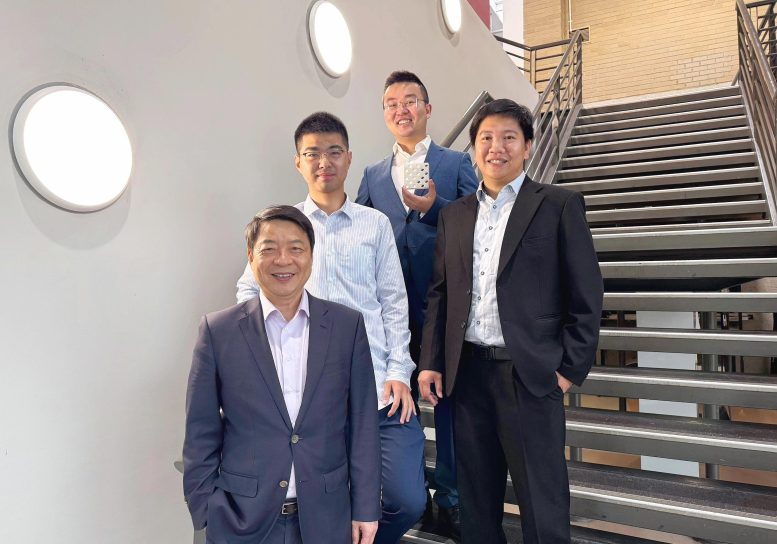
Inspired by the humble deep-sea sponge, RMIT University engineers have developed a new material with remarkable compressive strength and stiffness that could improve architectural and product designs.
Inspired by the deep-sea sponge <span class="glossaryLink" aria-describedby="tt" data-cmtooltip="
” data-gt-translate-attributes=”[{"attribute":"data-cmtooltip", "format":"html"}]” tabindex=”0″ role=”link”>Venus’ flower basket, engineers at RMIT University have developed a new material with exceptional compressive strength and stiffness, offering potential improvements in architectural and product design.
The material’s double-lattice structure mimics the intricate skeleton of this Pacific Ocean sponge, known for its resilience.
According to Dr. Jiaming Ma, lead author of the latest RMIT study, extensive testing and optimization confirmed that this design not only enhances strength and stiffness but also allows the material to contract under compression, making it highly adaptable for various applications.

It’s this last aspect – known as auxetic behavior – that opens a whole range of possibilities to apply the design across structural engineering and other applications.
“While most materials get thinner when stretched or fatter when squashed, like rubber, auxetics do the opposite,” Ma said.
“Auxetics can absorb and distribute impact energy effectively, making them extremely useful.”
Overcoming the Limitations of Auxetic Materials
Natural auxetic materials include tendons and cat skin, while synthetic ones are used to make heart and vascular stents that expand and contract as required.
But while auxetic materials have useful properties, their low stiffness and limited energy absorption capacity limit their applications. The team’s nature-inspired double lattice design is significant because it overcomes these main drawbacks.
“Each lattice on its own has traditional deformation behavior, but if you combine them as nature does in the deep-sea sponge, then it regulates itself and holds its form and outperforms similar materials by quite a significant margin,” Ma said.
[embedded content]
This video depicts the team’s double lattice structure. Credit: RMIT University
Results published in Composite Structures show with the same amount of material usage, the lattice is 13 times stiffer than existing auxetic materials, which are based on re-entrant honeycomb designs.
It can also absorb 10% more energy while maintaining its auxetic behavior with a 60% greater strain range compared to existing designs.

Practical Applications in Construction and Safety
Dr. Ngoc San Ha said the unique combination of these properties opened several exciting applications for their new material.
“This bioinspired auxetic lattice provides the most solid foundation yet for us to develop next-generation sustainable building,” he said.
“Our auxetic metamaterial with high stiffness and energy absorption could offer significant benefits across multiple sectors, from construction materials to protective equipment and sports gear or medical applications,” he said.
The bioinspired lattice structure could work as a steel building frame, for example, allowing less steel and concrete to be used to achieve similar results as a traditional frame.

The structure could also form the basis of lightweight sports protective equipment, bulletproof vests, or medical implants.
Honorary Professor Mike Xie said the project highlighted the value in taking inspiration from nature.
“Not only does biomimicry create beautiful and elegant designs like this one, but it also creates smart designs that have been optimized through millions of years of evolution that we can learn from,” Xie said.
Next steps
The team at RMIT’s Centre for Innovative Structures and Materials has tested the design using computer simulations and lab testing on a 3D-printed sample made from thermoplastic polyurethane.
They now plan to produce steel versions of the design to use along with concrete and rammed earth structures – a construction technique using compacted natural raw materials.
“While this design could have promising applications in sports equipment, PPE, and medical applications, our main focus is on the building and construction aspect,” Ma said.
“We’re developing a more sustainable building material by using our design’s unique combination of outstanding auxeticity, stiffness, and energy absorption to reduce steel and cement usage in construction.
“Its auxetic and energy-absorbing features could also help dampen vibrations during earthquakes.”
The team is also planning to integrate this design with <span class="glossaryLink" aria-describedby="tt" data-cmtooltip="
” data-gt-translate-attributes=”[{"attribute":"data-cmtooltip", "format":"html"}]” tabindex=”0″ role=”link”>machine learning algorithms for further optimization and to create programmable materials.
Reference: “Auxetic behavior and energy absorption characteristics of a lattice structure inspired by deep-sea sponge” by Jiaming Ma, Hongru Zhang, Ting-Uei Lee, Hongjia Lu, Yi Min Xie and Ngoc San Ha, 27 December 2024, Composite Structures.
DOI: 10.1016/j.compstruct.2024.118835
Funding: Australian Research Council
